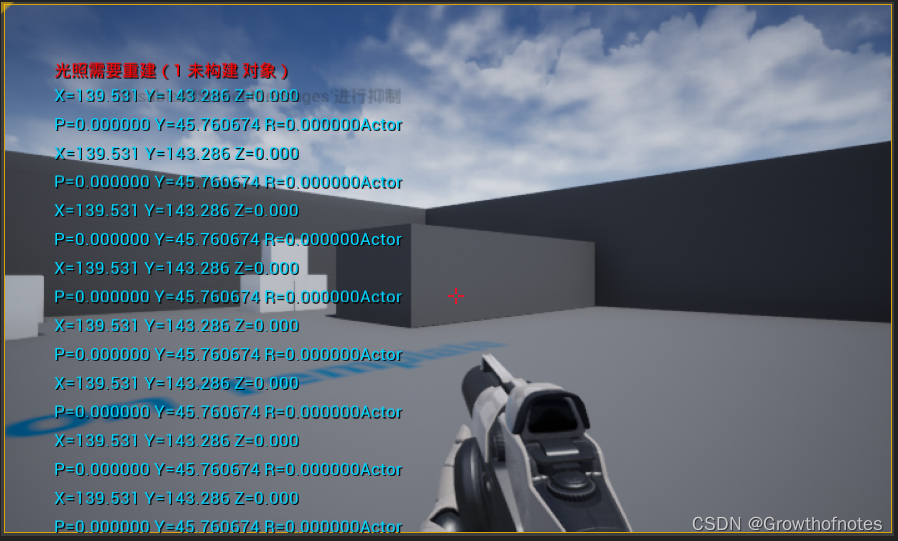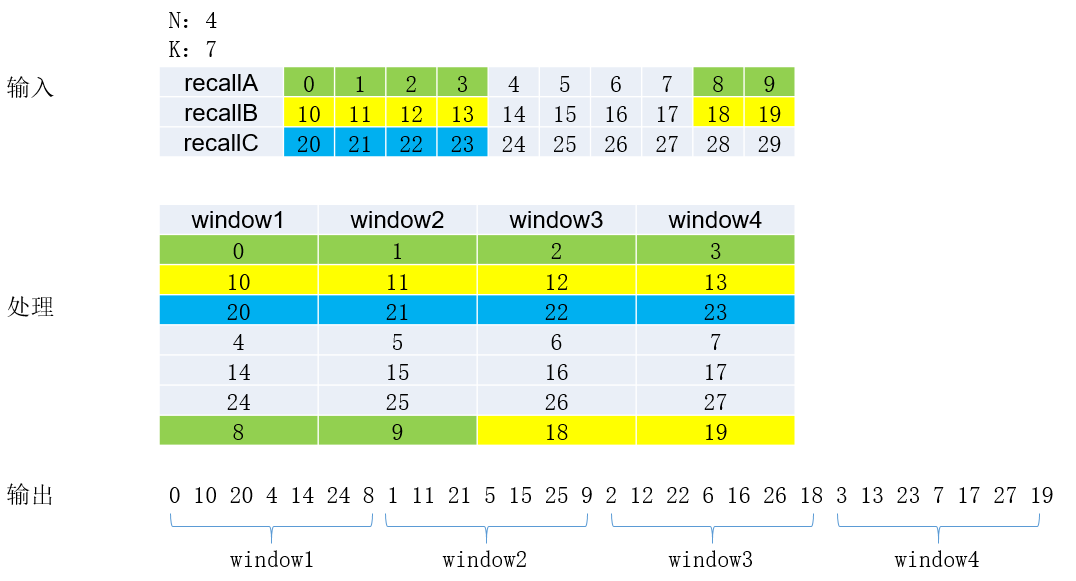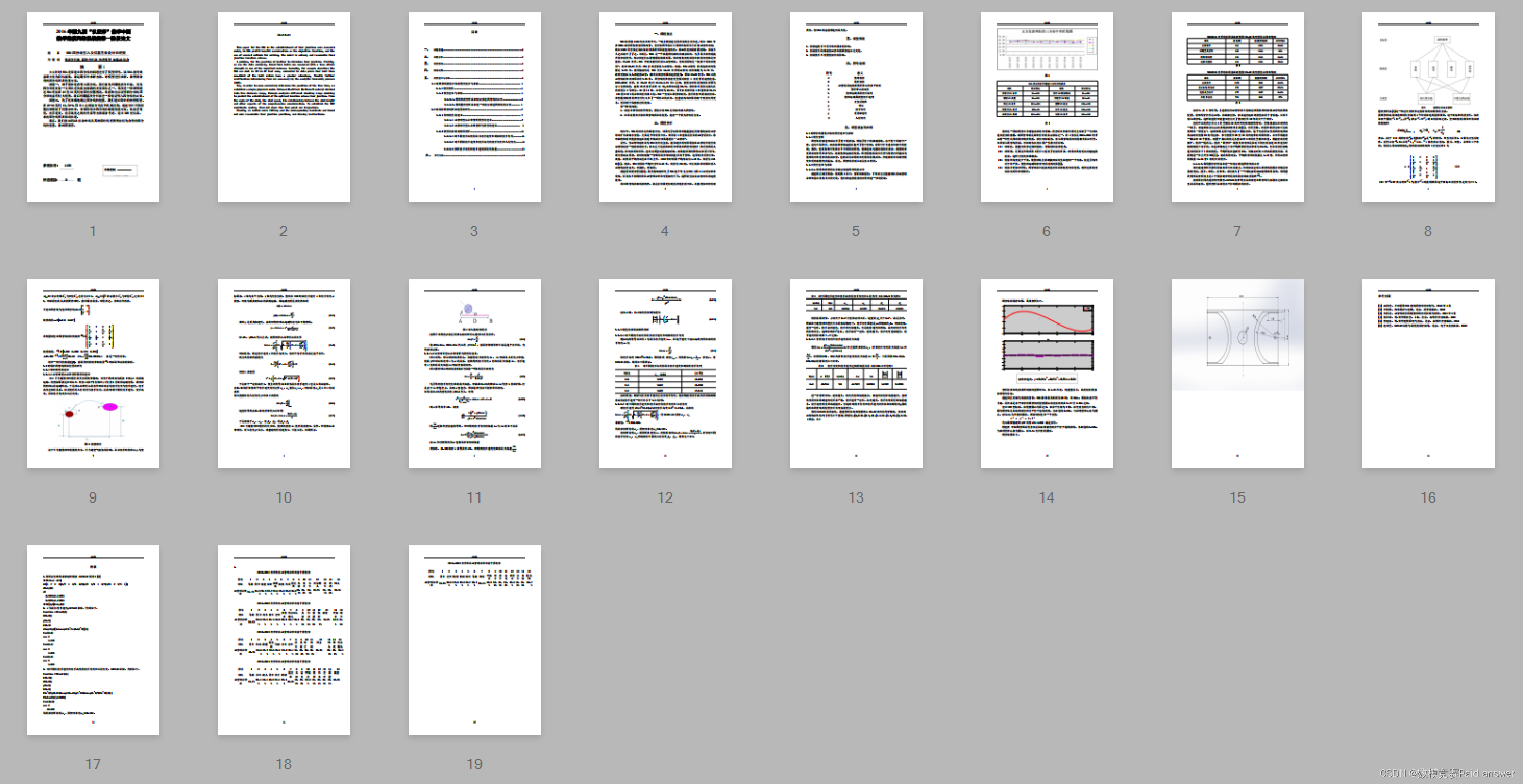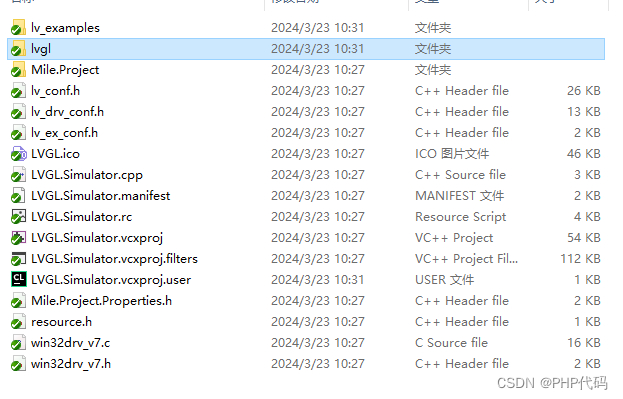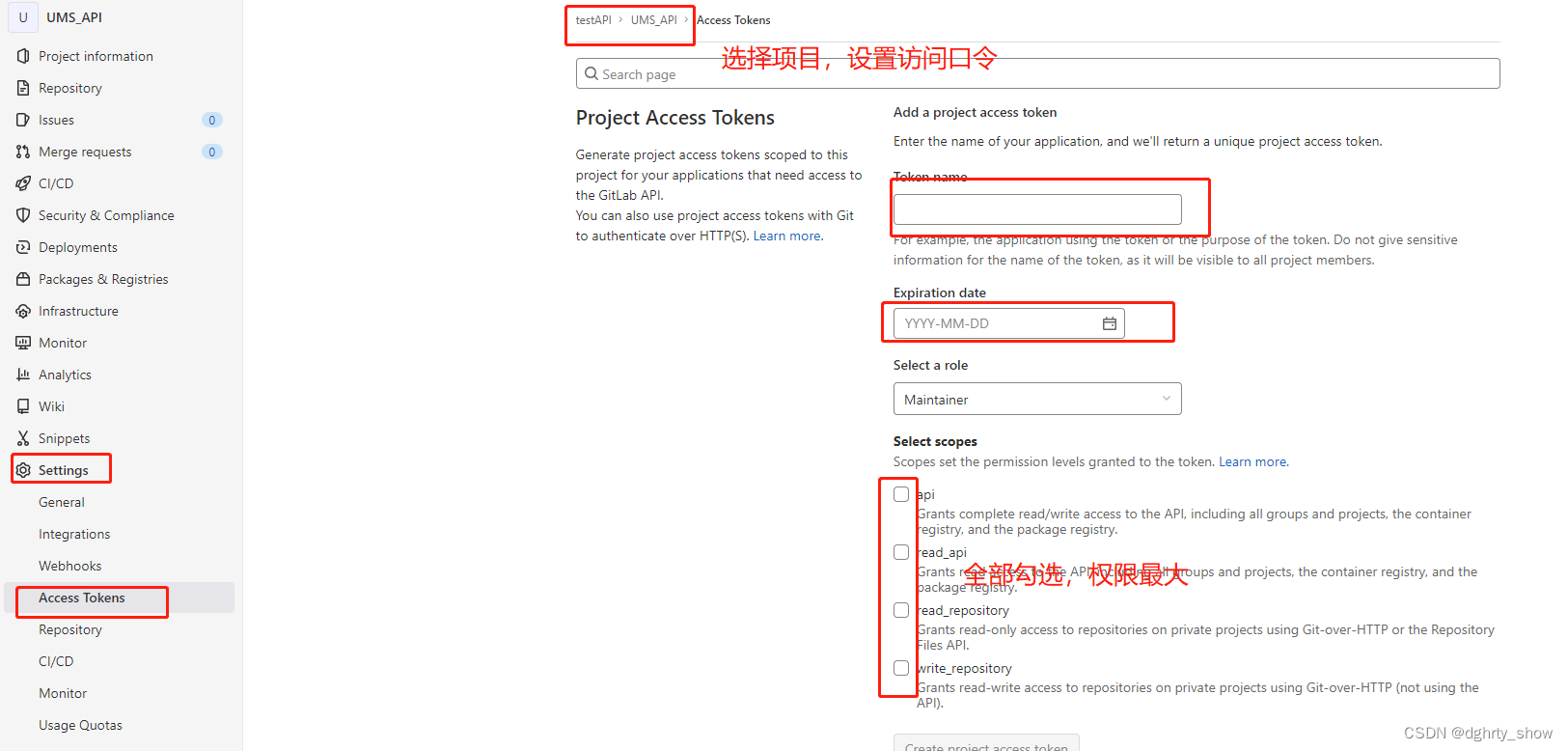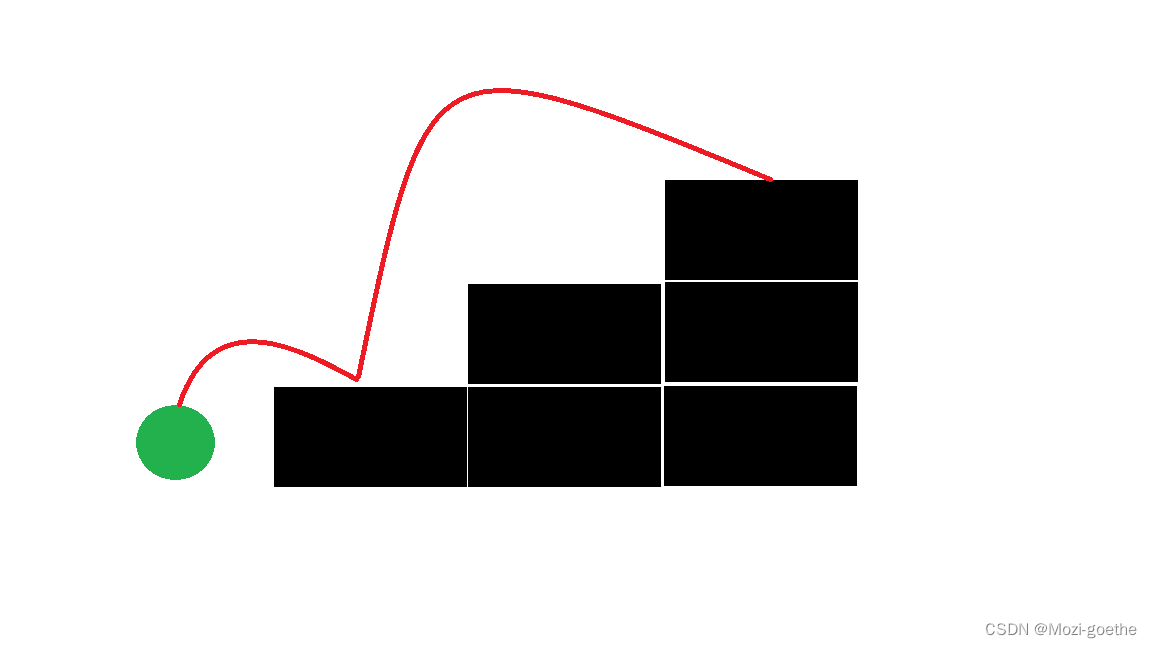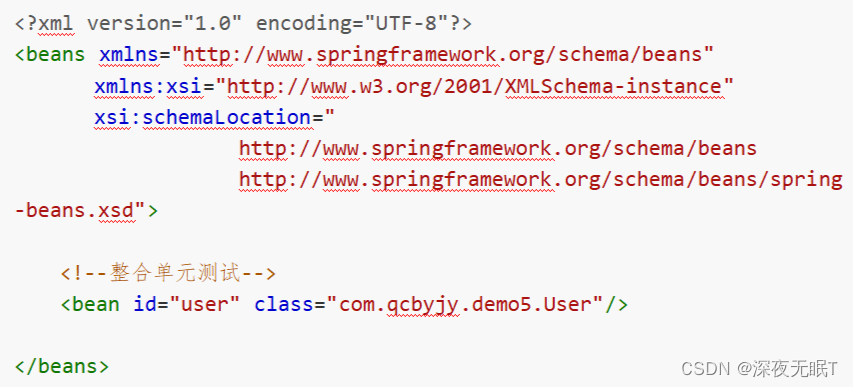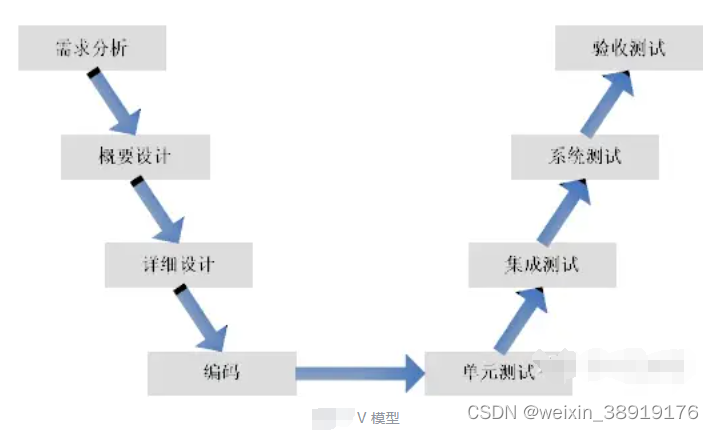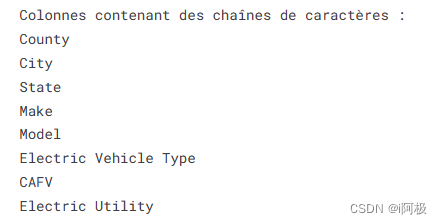

目录
- 前言
- 1.复习C文件IO相关操作
- 1.1 fopen函数
- 1.1.1 w模式
- 1.1.2 a模式
- 1.2 fwrite函数
- 函数介绍
- 函数使用
- 1.3 fgets函数
- 2.程序默认打开的文件流
- 3. 系统文件I/O
- 标志位flag
- w清空文件
- a追加文件
- r读取文件内容
- open函数返回值
前言
本节的学习我们需要弄清几个概念
- 文件 = 内容 + 属性
- 访问文件之前,都得先打开,然后再进行修改文件的操作,通过执行代码的方式完成修改,这期间文件必须被加载到内存中—内存文件
- 打开文件的操作是通过进程的形式来实现的
- 一个进程可以打开多个文件
- 进程没有打开的文件会被存在在磁盘中—磁盘文件
一定时间段内,系统中存才多个进程,也可能同时存在更多的被打开的文件,操作系统(OS)要不要管理多个被进程打开的文件呢?
这个答案是肯定的,但是我们更需要理解的是其如何对这些进行管理的?
先描述再组织
内核中一定要有描述被打开文件的结构体,并用其定义对象
1.复习C文件IO相关操作
C语言提供了一些文件操作函数,用于对文件进行读写和管理。以下是一些常用的C语言文件操作函数:
- fclose():关闭文件。语法为:int fclose(FILE *stream);
- fgetc():从文件中读取一个字符。语法为:int fgetc(FILE *stream);
- fputc():将一个字符写入文件。语法为:int fputc(int c, FILE *stream);
- fgets():从文件中读取一行字符串。语法为:char *fgets(char *str, int n, FILE *stream);
- fputs():将一个字符串写入文件。语法为:int fputs(const char *str, FILE *stream);
- fprintf():将格式化的数据写入文件。语法为:int fprintf(FILE *stream, const char *format, …);
- fscanf():从文件中读取格式化的数据。语法为:int fscanf(FILE *stream, const char *format, …);
- fseek():设置文件指针的位置。语法为:int fseek(FILE *stream, long offset, int origin);
- ftell():获取当前文件指针的位置。语法为:long ftell(FILE *stream);
- rewind():将文件指针重置到文件开头。语法为:void rewind(FILE *stream);
- feof():检查文件结束标志。语法为:int feof(FILE *stream);
以上是一些常用的C语言文件操作函数,你可以根据需要选择适合的函数来进行文件操作。
1.1 fopen函数
我们先认识一下fopen函数
fopen是一个C语言中的标准库函数,用于打开文件。它的原型如下:
FILE *fopen(const char *filename, const char *mode);
其中,filename是要打开的文件名,mode是打开文件的模式。fopen函数返回一个指向FILE结构的指针,该结构用于后续对文件进行读写操作。
常见的文件打开模式有以下几种:
- “r”:以只读方式打开文件,文件必须存在。
- “w”:以写入方式打开文件,如果文件不存在则创建,如果文件存在则清空内容。
- “a”:以追加方式打开文件,如果文件不存在则创建。
- “rb”、“wb”、“ab”:以二进制模式打开文件,用于处理二进制文件。
- fopen函数还可以用于打开其他类型的文件,例如网络流、设备文件等。
linux系统下的打开模式:
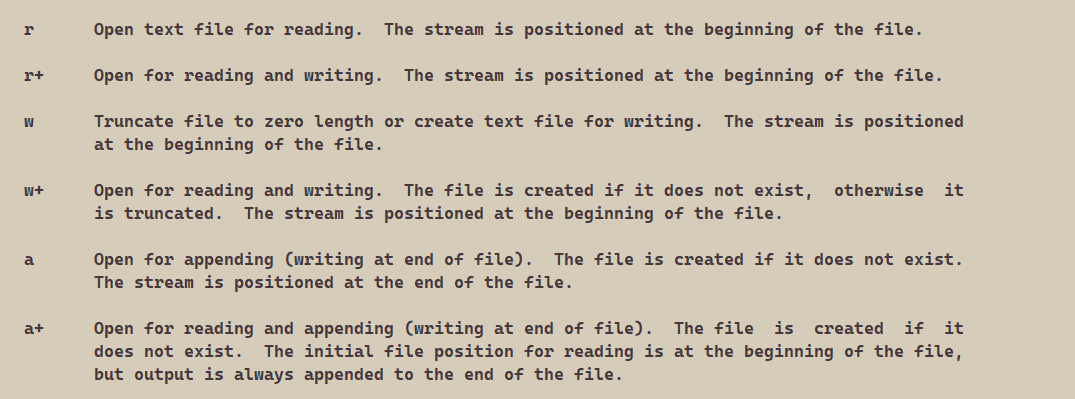
注意,在使用完文件后,需要使用fclose函数关闭文件,以释放资源。
1.1.1 w模式
#include<stdio.h>int main()
{FILE *fp = fopen("./log.txt","w");if(fp == NULL){perror("fopen");return 1;}fclose(fp);return 0;
}
运行结果:
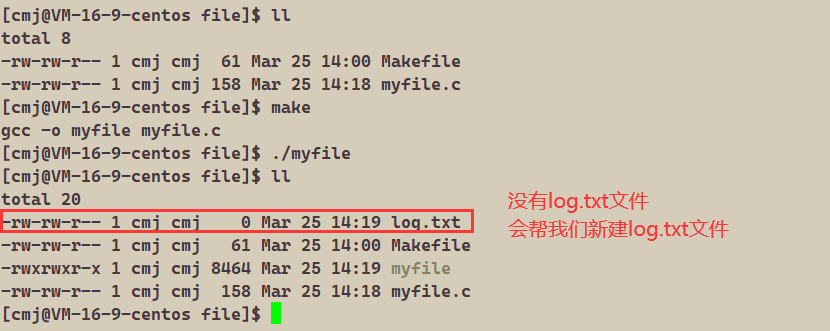
加上一点文件操作:
#include<stdio.h>int main()
{FILE *fp = fopen("./log.txt","w");if(fp == NULL){perror("fopen");return 1;}//文件操作const char *str = "hello file\n";fputs(str,fp);fclose(fp);return 0;
}
运行结果:

将文件操作注释掉:
#include<stdio.h>int main()
{FILE *fp = fopen("./log.txt","w");if(fp == NULL){perror("fopen");return 1;}//文件操作//const char *str = "hello file\n";//fputs(str,fp);fclose(fp);return 0;
}运行结果:

结果刚刚写入的hello file被清空了
结论:
以W方式访问文件时,首先清空原始文件,如果没有文件,会进行创建文件,在文件的开头对文件进行修改。
echo命令+重定向:

可以发现其本质就是我们的w模式,文本文件会被清空然后再往其中进行写入,我们单纯使用重定向(大于符号),文件会直接被清空
1.1.2 a模式
#include<stdio.h>int main()
{FILE *fp = fopen("./log.txt","a");if(fp == NULL){perror("fopen");return 1;}//文件操作const char *str = "hello file\n";fputs(str,fp);fclose(fp);return 0;
}运行结果:
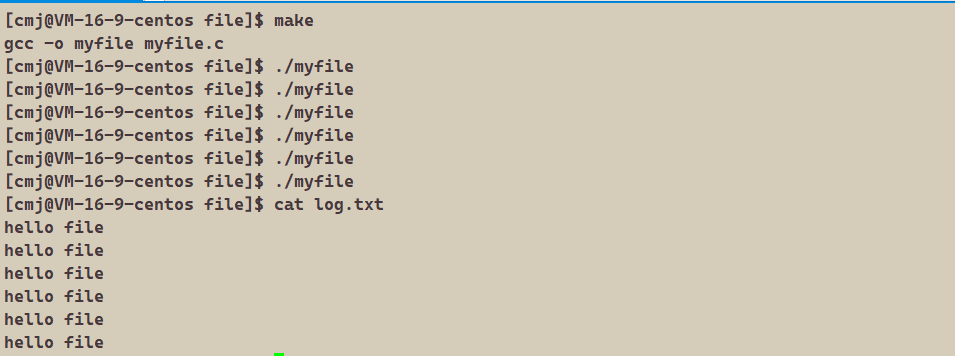
a模式本质也是写入,只不过其写入是追加在文件末尾
echo命令+追加重定向:
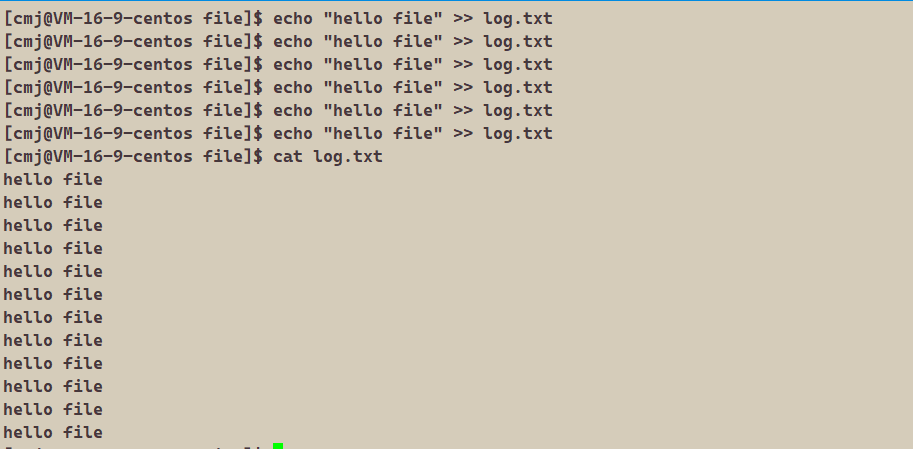
可以发现其本质就是我们的a模式
1.2 fwrite函数
函数介绍
fwrite是C语言中的一个函数,用于将数据块写入文件。它的原型如下:
size_t fwrite(const void *ptr, size_t size, size_t count, FILE *stream);
参数说明:
ptr:指向要写入的数据块的指针。
size:每个数据块的字节数。
count:要写入的数据块的数量。
stream:指向要写入的文件的指针。
fwrite函数将数据块从内存写入到文件中。它会返回成功写入的数据块数量。如果返回值与count不相等,可能表示写入失败或者到达了文件末尾。
使用fwrite函数时,需要注意以下几点:
- 写入的数据块大小应与实际数据类型相匹配,以避免数据损坏或类型错误。
- 写入的文件必须以二进制模式打开,以确保数据以原始格式写入文件。
- 写入的文件必须存在且可写。
函数使用
#include<stdio.h>
#include<string.h>int main()
{FILE *fp = fopen("./log.txt","a");if(fp == NULL){perror("fopen");return 1;}//文件操作const char *str = "hello file\n";fputs(str,fp);int count = 5;while(count--){fwrite(str,strlen(str),1,fp);}fclose(fp);return 0;
}
运行结果:

对log.txt文件中写入了6个hello file,fputs写了一个,fwrite写了5个
1.3 fgets函数
fgets是C语言中的一个函数,用于从文件或标准输入流中读取一行字符串。它的函数原型如下:
char *fgets(char *str, int n, FILE *stream);
其中,str是一个指向字符数组的指针,用于存储读取到的字符串;n是一个整数,表示最多读取的字符数(包括换行符和空字符);stream是一个指向FILE结构的指针,表示要读取的文件流。
- fgets函数会从指定的文件流中读取一行字符串,并将其存储到str所指向的字符数组中。它会读取n-1个字符,或者直到遇到换行符(‘\n’)为止。如果成功读取到字符串,则会在字符串末尾添加一个空字符(‘\0’)作为结束标志。
- fgets函数的返回值是一个指向str的指针,如果成功读取到字符串,则返回该指针;如果到达文件末尾或发生错误,则返回NULL。
- 需要注意的是,fgets函数会将换行符也读取进来,并存储在字符串中。如果不希望包含换行符,可以使用字符串处理函数(如strlen和strtok)来去除它。
#include<stdio.h>
#include<string.h>int main()
{FILE *fp = fopen("./log.txt","r");if(fp == NULL){perror("fopen");return 1;}char buffer[64];while(1){char *r = fgets(buffer,sizeof(buffer),fp);if(!r) break;printf("%s",buffer);}fclose(fp);return 0;
}

2.程序默认打开的文件流
C默认会打开三个输入输出流,分别是stdin, stdout, stderr
仔细观察发现,这三个流的类型都是FILE*, fopen返回值类型,文件指针
stdin、stdout和stderr是与输入输出相关的三个标准流。它们在计算机程序中起着重要的作用。
-
stdin(标准输入):stdin是程序接收输入数据的标准输入流。它通常与键盘输入相关联,用于从用户那里接收输入。程序可以通过读取stdin来获取用户输入的数据。
-
stdout(标准输出):stdout是程序输出结果的标准输出流。它通常与屏幕输出相关联,用于向用户显示程序的输出结果。程序可以通过将数据写入stdout来输出结果。
-
stderr(标准错误):stderr是程序输出错误信息的标准错误流。它通常也与屏幕输出相关联,用于向用户显示程序的错误信息。与stdout不同的是,stderr主要用于输出程序运行过程中的错误和异常信息。
这三个标准流在程序中起着重要的作用,它们可以通过重定向进行控制。例如,可以将stdin重定向到文件中,以便从文件中读取输入;可以将stdout和stderr重定向到文件中,以便将输出结果和错误信息保存到文件中。
stdout就是我们的显示器,于是我们就多了几种打印的方式:
#include<stdio.h>
#include<string.h>int main()
{printf("hello printf\n");fputs("hello file\n",stdout);const char *msg="hello fwrite\n";fwrite(msg,1,strlen(msg),stdout);fprintf(stdout,"hello fprintf\n");return 0;
}
stdin是程序接收输入数据的标准输入流。我们可以这样输入:
#include<stdio.h>
#include<string.h>int main()
{char buffer[64];fscanf(stdin,"%s",buffer);printf("%s",buffer);return 0;
}

3. 系统文件I/O
操作文件,除了上述C接口(当然,C++也有接口,其他语言也有),我们还可以采用系统接口来进行文件访问,先来直接以代码的形式,实现和上面一模一样的代码:
我们先认识Linux的open接口
Linux的open接口是用于打开文件或创建文件的系统调用函数。它的原型如下:
man 2 open

其中,pathname参数是文件路径名,flags参数指定了打开文件的方式和行为,mode参数用于指定新创建文件的权限。
flags参数可以使用以下常用的标志位进行组合:
O_RDONLY:只读方式打开文件。
O_WRONLY:只写方式打开文件。
O_RDWR:读写方式打开文件。
O_CREAT:如果文件不存在,则创建文件。
O_EXCL:与O_CREAT一起使用,如果文件已存在则返回错误。
O_TRUNC:如果文件存在且以写方式打开,则将其长度截断为0。
O_APPEND:以追加方式打开文件,即每次写操作都追加到文件末尾。
mode参数用于指定新创建文件的权限,它是一个八进制数,常用的权限值有:
S_IRUSR:用户可读权限。
S_IWUSR:用户可写权限。
S_IXUSR:用户可执行权限。
S_IRGRP:组可读权限。
S_IWGRP:组可写权限。
S_IXGRP:组可执行权限。
S_IROTH:其他人可读权限。
S_IWOTH:其他人可写权限。
S_IXOTH:其他人可执行权限。
如果open函数调用成功,则返回一个非负整数的文件描述符,该文件描述符可以用于后续的读写操作。如果调用失败,则返回-1,并设置errno变量来指示错误原因。
标志位flag
标志位flag类似于一个一个宏,我们在如下代码使用按位与实现对12345的输出,另一方面模拟实现了open接口里的flag
#include<stdio.h>#define ONE 1
#define TWO (1<<1)
#define THREE (1<<2)
#define FOUR (1<<3)
#define FIVE (1<<4)void Print(int flag)
{if(flag & ONE) printf("1\n");if(flag & TWO) printf("2\n");if(flag & THREE) printf("3\n");if(flag & FOUR) printf("4\n");if(flag & FIVE) printf("5\n");}
int main()
{Print(ONE);printf("-------------------------\n");Print(TWO);printf("-------------------------\n"); Print(ONE|TWO);printf("-------------------------\n");Print(THREE|FOUR|FIVE);printf("-------------------------\n");Print(ONE|TWO|THREE|FOUR|FIVE);return 0;
}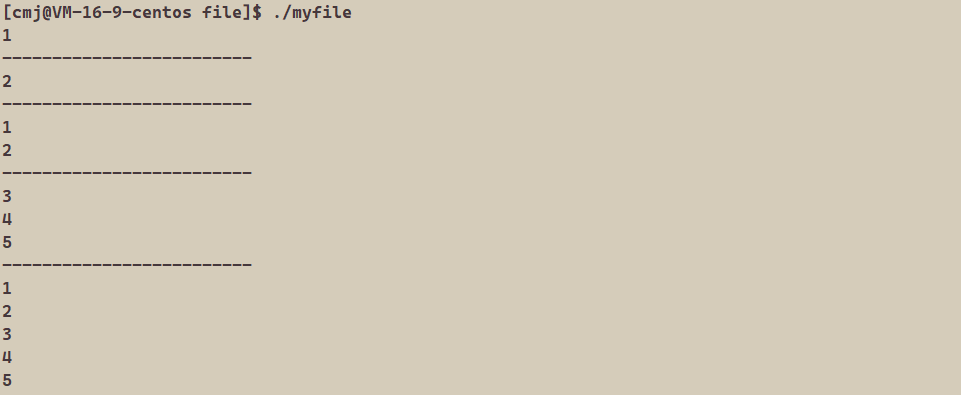
w清空文件
- 我们可以使用open接口以写的形式打开文件
#include<stdio.h>
#include<sys/types.h>
#include<sys/stat.h>
#include<fcntl.h>int main()
{int fd = open("log.txt",O_WRONLY); //以写的方式打开if(fd == -1){perror("open");return 1;}return 0;
}
因为什么都没做。

删掉log.txt后,便会报错

- 我们可以使用open接口以写的形式打开文件,并实现文件不存在时创建文件
#include<stdio.h>
#include<sys/types.h>
#include<sys/stat.h>
#include<fcntl.h>int main()
{int fd = open("log.txt",O_WRONLY|O_CREAT); //以写的方式打开if(fd == -1){perror("open");return 1;}return 0;
}

这里文件权限上出现了S,这是我们从没见过的参数,也就是权限位乱码了,这是因为我们使用C语言新建的文件,并不是系统默认的
所以我们在实现创建文件的操作时,我们需要告诉系统文件的权限
- 我们可以使用open接口以写的形式打开文件,并实现文件不存在时创建文件(改良)
mode参数那里我们填入普通文件权限0666权限掩码
#include<stdio.h>
#include<sys/types.h>
#include<sys/stat.h>
#include<fcntl.h>int main()
{int fd = open("log.txt",O_WRONLY|O_CREAT,0666); //以写的方式打开if(fd == -1){perror("open");return 1;}return 0;
}

- 我们可以使用open接口以写的形式打开文件,并实现文件不存在时创建文件,往其中写入文件
#include<stdio.h>
#include<sys/types.h>
#include<sys/stat.h>
#include<fcntl.h>
#include<unistd.h>
#include<string.h>int main()
{int fd = open("log.txt",O_WRONLY|O_CREAT,0666); //以写的方式打开if(fd == -1){perror("open");return 1;}const char* str="hello system call\n";write(fd,str,strlen(str));close(fd);return 0;
}

- 我们可以使用open接口以写的形式打开文件,并实现文件不存在时创建文件,往其中写入文件,文件里有内容验证是否去清空文件内容重新写入
#include<stdio.h>
#include<sys/types.h>
#include<sys/stat.h>
#include<fcntl.h>
#include<unistd.h>
#include<string.h>int main()
{int fd = open("log.txt",O_WRONLY|O_CREAT,0666); //以写的方式打开if(fd == -1){perror("open");return 1;}const char* str="aaaa\n";write(fd,str,strlen(str));close(fd);return 0;
}

在这里并没有清空源文件的内容,只是在开头用aaaa\n替换了开头五个字符长度的字符串
- 实现清空(实现w模式)
#include<stdio.h>
#include<sys/types.h>
#include<sys/stat.h>
#include<fcntl.h>
#include<unistd.h>
#include<string.h>int main()
{int fd = open("log.txt",O_WRONLY|O_CREAT|O_TRUNC,0666); //以写的方式打开if(fd == -1){perror("open");return 1;}const char* str="aaaa\n";write(fd,str,strlen(str));close(fd);return 0;
}
a追加文件
#include<stdio.h>
#include<sys/types.h>
#include<sys/stat.h>
#include<fcntl.h>
#include<unistd.h>
#include<string.h>int main()
{int fd = open("log.txt",O_WRONLY|O_CREAT|O_APPEND,0666); //以写的方式打开if(fd == -1){perror("open");return 1;}const char* str="aaaa\n";write(fd,str,strlen(str));close(fd);return 0;
}

r读取文件内容
#include <stdio.h>
#include <sys/types.h>
#include <sys/stat.h>
#include <fcntl.h>
#include <unistd.h>
#include <string.h>
int main()
{int fd = open("log.txt", O_RDONLY);if(fd < 0){perror("open");return 1;}const char *msg = "hello bit!\n";char buf[1024];while(1){ssize_t s = read(fd, buf, strlen(msg));//类比writeif(s > 0){printf("%s", buf);}else{break;}}close(fd);return 0;
}

open函数返回值
open的函数返回值不是int吗?我们来输出一下
#include <stdio.h>
#include <sys/types.h>
#include <sys/stat.h>
#include <fcntl.h>
#include <unistd.h>
#include <string.h>
int main()
{int fd1 = open("log.txt", O_WRONLY);int fd2 = open("log.txt", O_WRONLY);int fd3 = open("log.txt", O_WRONLY);int fd4 = open("log.txt", O_WRONLY);int fd5 = open("log.txt", O_WRONLY);printf("fd1: %d\n",fd1);printf("fd2: %d\n",fd2);printf("fd3: %d\n",fd3);printf("fd4: %d\n",fd4);printf("fd5: %d\n",fd5);return 0;
}
这里为什么是34567?为啥不见012呢?
这是因为012已经被默认使用了
0:标准输入
1:标准输出
2:标准错误
在认识返回值之前,先来认识一下两个概念: 系统调用 和 库函数
- 上面的
fopen fclose fread fwrite都是C标准库当中的函数,我们称之为库函数(libc)。 - 而,
open close read write lseek都属于系统提供的接口,称之为系统调用接口
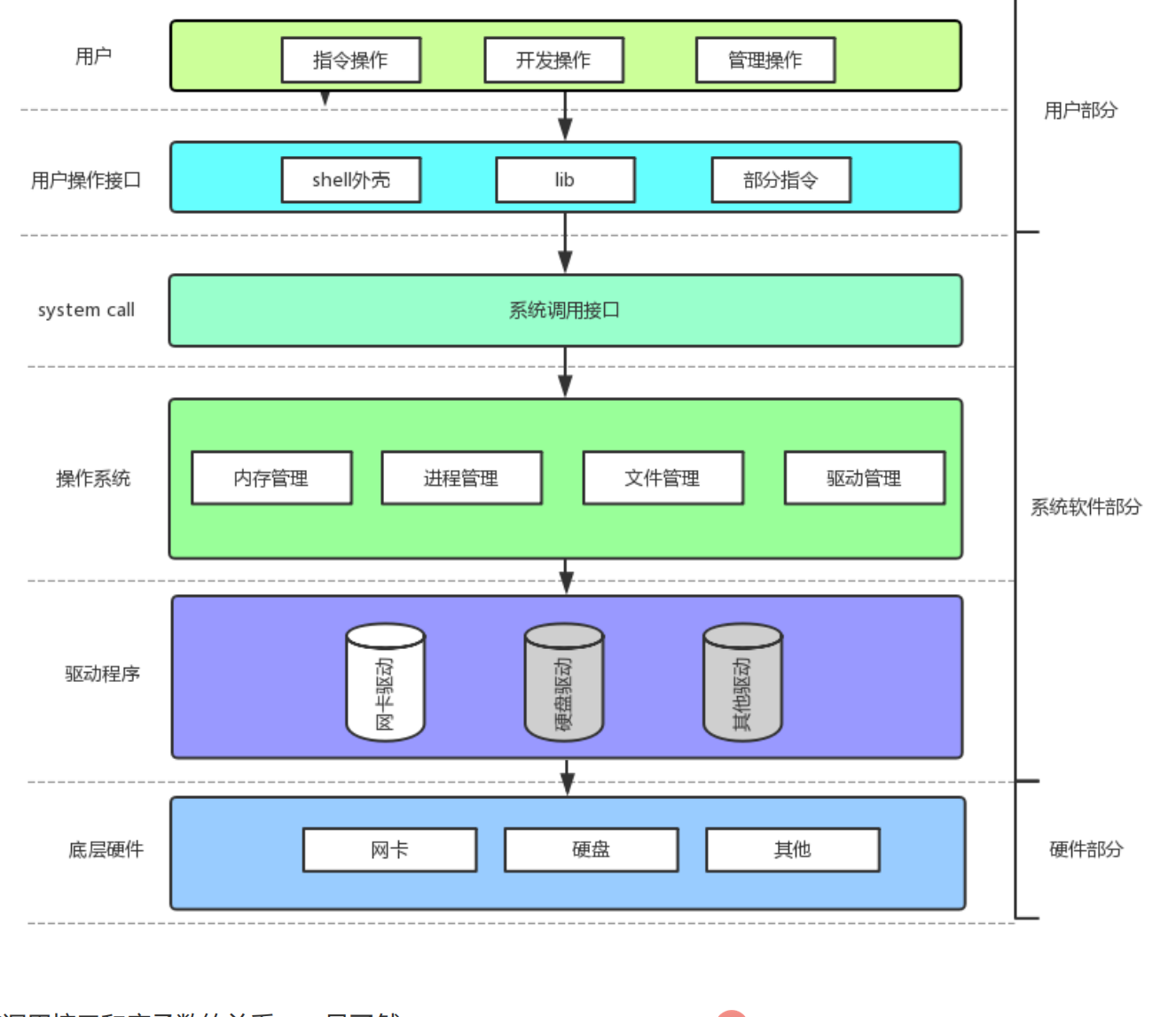
我们之前的标准输入、标准输出、标准错误

其类型都是FILE,这其实是我们C语言库里的一个结构体,如果他们能变成我们的012,必须是在其内部封装了
#include <stdio.h>
#include <sys/types.h>
#include <sys/stat.h>
#include <fcntl.h>
#include <unistd.h>
#include <string.h>
int main()
{printf("%d\n",stdin->_fileno);printf("%d\n",stdout->_fileno);printf("%d\n",stderr->_fileno);int fd1 = open("log.txt", O_WRONLY);int fd2 = open("log.txt", O_WRONLY);int fd3 = open("log.txt", O_WRONLY);int fd4 = open("log.txt", O_WRONLY);int fd5 = open("log.txt", O_WRONLY);printf("fd1: %d\n",fd1);printf("fd2: %d\n",fd2);printf("fd3: %d\n",fd3);printf("fd4: %d\n",fd4);printf("fd5: %d\n",fd5);return 0;
}

结论:
- C语言的文件接口,本质就是封装了系统调用!
我们使用的fopen就相当于我们的open接口调用了不同的标志位,也就是我们的C语言对于文件的接口都是对系统调用进行封装的结果
- 为什么C语言要封装?
这是为了C语言的可移植性,在不同系统都可以调用,保证C语言的平台性
